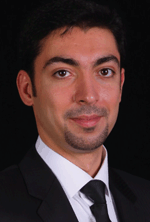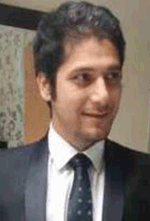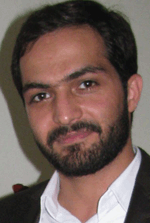The insensitivity of thermal diffusivity of natural sediments to saturation
Ayman Ezdini A C , James Griffith A , Nick Lange A , Soroush Tehrani A , Hamad Roshan B and Mohammad Sarmadivaleh AA Department of Petroleum Engineering, ARRC building, Curtin University of Technology, 26 Dick Perry Avenue, Bentley, Perth, WA 6102, Australia.
B Faculty of Engineering, Level 6, Building K17, University of New South Wales, Kensington Campus, Sydney, NSW 2052, Australia.
C Corresponding author. Email: ayman.ezdini@postgrad.curtin.edu.au
The APPEA Journal 58(2) 705-709 https://doi.org/10.1071/AJ17214
Accepted: 22 February 2018 Published: 28 May 2018
Abstract
This extended abstract presents a ground-breaking study of thermal properties of soils and their dependency on saturation. The paper tries to prove that thermal diffusivity is not significantly dependent on saturation due to its close relationship with saturation-independent parameters such as thermal conductivity and volumetric heat capacity. The investigation is divided into two main scopes of work: the first is to build statistical analysis using the Monte Carlo technique by means of random sampling certain soil thermal properties; and the second is to experimentally validate the statistical models.
The experimental framework of the study encompasses the measurement of thermal properties of different soil samples. These samples varied in terms of grain size, percentage clay content, and level of saturation. The experiments were carried out using a KD2-Pro Dual Needle Probe Thermal Properties Analyser.
The results demonstrate that saturation has a negligible effect on thermal diffusivity of soils but an inverse relationship exists between diffusivity and clay content. Furthermore, the variation in grain size effect on diffusivity is within 5%.
The study shows a correlation between lithology, porosity, and thermal properties. The implications are numerous: from the determination of unwanted heat diffusion of pipelines to the estimation of reservoir properties such as porosity and permeability.
Keywords: KD2-Pro, porosity, rock physics, specific heat capacity, thermal conductivity, volumetric heat capacity.

Ayman Ezdini is a petroleum engineer who has worked on a wide range of projects. He holds a Bachelor’s degree (Honours) in Petroleum Engineering and is working towards his Masters of Philosophy. Having studied banking and finance before venturing into petroleum engineering, he takes pride in having a strong background in business, accounting and finance. He has worked on projects in the US, Australia, Tunisia, Morocco and Bahrain. |

James Griffith is a graduate reservoir engineer currently working for Shell Australia. He holds a Bachelor’s Degree (honours) in Petroleum Engineering. He has worked on a wide range of projects, and is currently working on coal seam gas in Queensland. |

After graduating Curtin in 2015, Nick Lange became a part of the team at Northern Oil & Gas Australia (NOGA) to aid in transitioning the Northern Endeavour FPSO from the previous operator. In the subsequent years he has moved into a Production Engineering position at NOGA, gaining experience in operational support, production optimisation, data analysis, steady-state flow modelling, and short and long term asset forecasting. |

Soroush Tehrani is an Application Engineer at Inflatable Packers International (IPI), which produce downhole equipment for the Oil & Gas and Mining industries. He has more than nine years of experience as an offshore completion and well intervention engineer specialising in coiled tubing, slickline, perforation operation, well stimulation, and thru-tubing fishing operations. His educational background is in petroleum production engineering and has a master’s degree in reservoir engineering. He is also doing his PhD on a Geomechanical project at Curtin University. |

Dr Hamid Roshan’s research interests centre on experimental and numerical multi-physics modelling of reactive porous media in particular shales. Specifically, his current research area focuses on studying the link between micro-scale chemo-thermo-hydro-mechanical evolutions to macro-scale observations in shale rocks which has a wide range of applications from reservoir geomechanics to unconventional reservoir simulation. Before joining the School of Petroleum Engineering in 2015, Hamid was a Postdoctoral Fellow at the School of Civil and Environmental Engineering at UNSW. He also worked in UGS Company as a Petroleum Engineer for a few years before pursuing his PhD study. In addition, He holds two patents on smart drilling cement and quick-release tri-axial system and has been awarded several prizes for excellence in research on shale rocks. He is also an active member of SPE, ARMA and AGU. |

Dr Mohammad Sarmadivaleh has completed his PhD degree in Petroleum Geomechanics from Curtin University. His research thesis was exceptional and received the Chancellor’s Commendation. Mohammad has been involved in numerous university research studies and industrial projects in Australia, North Sea, and the Middle East. Within Australia, he has been involved in several major projects such as South West Hub, Gorgon LNG, Ichthys LNG, Pluto LNG, and QGC LNG, among others. |
References
Akbarzadeh, K., Hammami, A., Kharrat, A., Zhang, D., Allenson, S., Creek, J., Kabir, S., Jamaluddin, A., Marshall, A., Rodgers, R., Mullins, O., and Solbakken, T. (2007). Asphaltenes – Problematic but Rich in Potential. OilField Review 19, 22–43.Alberts, L., and Weltje, G. J. (2001). Predicting initial porosity as a function of grain-size distribution from simulations of random sphere packs. In ‘Proceedings of the 6th Annual Conference of the International Association for Mathematical Geology, IAMG, 6–12 September 2001, Cancun.’
Boisnault, J. M., Guillot, D., Bourahla, A., Tirlia, T., Dahl, T., Holmes, C., Raiturkar, A. M., Maroy, P., Moffett, C., Mejia, G. P., Martinez, I. R., Revil, P., and Roemer, R. (1999). Concrete developments in cementing technology. OilField Review. 11, 16–29.
Burés, S., Pokorny, F. A., Landau, D. P., and Ferrenberg, A. M. (1993). Computer simulation of volume shrinkage after mixing container media components. Journal of the American Society for Horticultural Science 118, 757–761.
Decagon Devices (2014). ‘I. KD2 Pro User Manual.’ (Decagon Devices Inc.: Pullman, WA, USA.)
Demongodin, L., Pinoteau, B., Vasseur, G., and Gable, R. (1991). Thermal conductivity and well logs: a case study in the Paris basin. Geophysical Journal International 105, 675–691.
| Thermal conductivity and well logs: a case study in the Paris basin.Crossref | GoogleScholarGoogle Scholar |
Farouki, O. T. (1981). Thermal properties of soils. CRREL Monograph 81-1. US Army, Corps of Engineers, Cold Regions Research and Engineering Laboratory, Hanover, NH. Available at: http://www.dtic.mil/dtic/tr/fulltext/u2/a111734.pdf [Verified 16 March 2018]
Fu, M. C (2002). Optimization for simulation: theory vs. practice. INFORMS Journal on Computing 14, 192–215.
| Optimization for simulation: theory vs. practice.Crossref | GoogleScholarGoogle Scholar |
Fuchs, S., Balling, N., and Förster, A. (2015). Calculation of thermal conductivity, thermal diffusivity and specific heat capacity of sedimentary rocks using petrophysical well logs. Geophysical Journal International 203, 1977–2000.
| Calculation of thermal conductivity, thermal diffusivity and specific heat capacity of sedimentary rocks using petrophysical well logs.Crossref | GoogleScholarGoogle Scholar |
Johansen O. (1977). Thermal conductivity of soils. US Army, Corps of Engineers, Cold Regions Research and Engineering Laboratory, Hanover, NH. Available at: http://www.dtic.mil/dtic/tr/fulltext/u2/a044002.pdf [Verified 16 March 2018].
Kalos, M. H., and Whitlock, P. A. (2008). ‘Monte Carlo Methods.’ (John Wiley & Sons.)
Northern Innovation Limited (2010). ‘Technical Investigation into Thermal Oil Technology.’ (Invest Northern Ireland: Belfast.)
Shen C. (2013). SAGD for heavy oil recovery. In ‘Enhanced Oil Recovery Field Case Studies.’ (Ed. J. Sheng) pp. 413–445 (Gulf Professional Publishing: Waltham, MA.)
Witte, H. J. L., van Gelder, G. J., and Spitier, J. (2002). In situ measurement of ground thermal conductivity: A Dutch perspective. ASHRAE Transactions. 108, 263–272.


